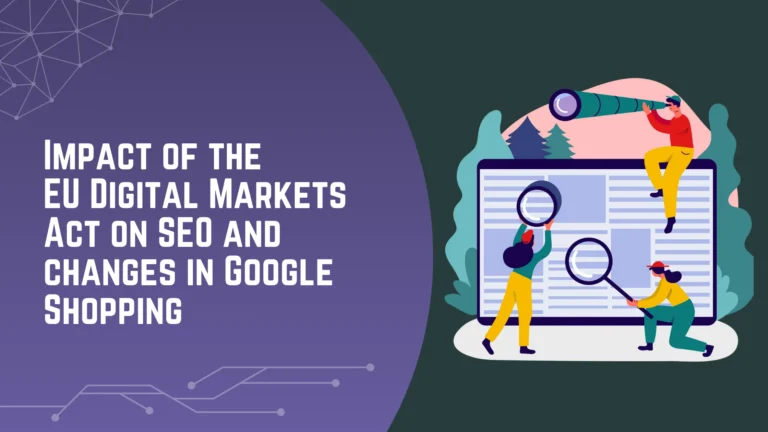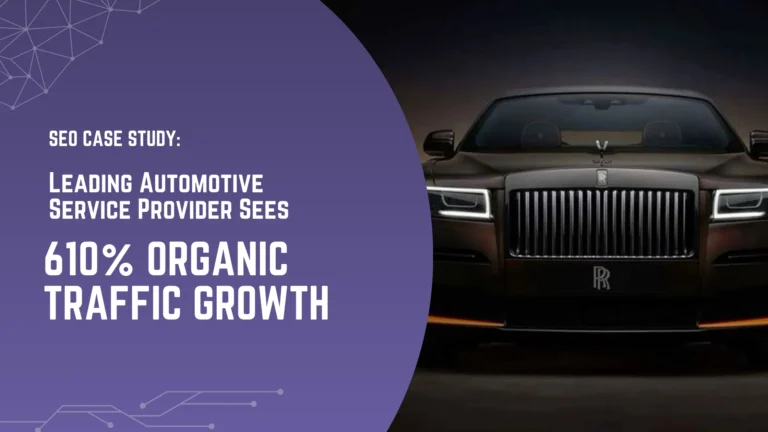In this article, you will learn everything about Pogo Sticking in SEO.
- What is Pogo Sticking
- Why is Pogo Sticking bad
- How to fix Pogo Sticking
…And lots more
First thing first:
What is Pogo Sticking in SEO?
When a user goes back to the SERP instantly after clicking on a link because the result didn’t satisfy their search query is known as pogo-sticking.
Let’s start with an example for better understanding.
A user enters a query on the search engine and the search engine comes up with a list of results.
The user goes to the first link and is not happy with the result. They jump back to the SERP and look for a result that satisfies their query.
In short, when a user jumps back and forth in the SERP it is called Pogo Sticking.
It also helps Google to evaluate the rankings for a given keyword. If a lot of users Pogostick after they have clicked on the first link, Google understands the result doesn’t satisfy the user intent and thus decides to drop it down a few spots and place more relevant results at the top.
Why Is Pogo Sticking Bad for SEO?
When a user goes to your website and returns back immediately to the SERP, it not only increases your bounce rate but can also affect your ranking in the SERP.
Pogo Sticking can say a lot about your website and its content. Here are a few reasons which might show why visitors are Pogo Sticking from your website.
#1 Users Are Not Impressed With The On-Page Content
“Content is the king”. Something Bill Gates wrote way back in 1996 and it is still relevant.
The motif of the user is to read what exactly they want to read. If a user searches for “Apple gone bad”, it can either be a real rotted apple or a broken apple device.
If you provide an apple service but users want to learn whether their apple has gone bad, they certainly don’t want to visit your website.
Irrelevant content results in user dissatisfaction. Regardless of how good your content is if it doesn’t match the user’s needs, they certainly won’t hang around.
Now, how to figure out if any of your pages are optimized with the wrong target keyword, resulting in Pogo Sticking,
Open Google Analytics -> All Traffic -> Channels -> Organic Traffic
Now, set the Landing page as the primary dimension.
Go to the advanced search option and set the number of page views to the maximum.
Now, filter the result for pages that have a visit duration of less than fifty seconds.
Sort the result for ascending order based on the average page visit duration If any of the pages have an “Avg. Time on Page” of less than 17 seconds, then the users might have been Pogo Sticking on that page.
Pages with a high bounce rate and less visit duration can also be a sign of Pogo Sticking. If it ranks on the top but is a victim of Pogo Sticking, then the rankings might start to drop soon.
What you can do is revise the content and the keywords. Search for the target keyword on the search engine and go through the results to understand when people are using that keyword and what kind of result they are looking for in the given term.
Also, apart from high-quality content, don’t forget to include attractive visual content so users are motivated to spend some more time on the page.
You can also try to emit long sentences and paragraphs so users don’t feel like they have been reading forever to get to the point.
#2 The Site Has A Poor User Experience
Poor user experience can lead to pogo-sticking.
If a user comes to your page and is really disappointed with the site speed, or the design, or has to face annoying pop-ups when they are trying to find something can cause them to Pogo Stick.
Your aim should be to retain the visitors of your page by making the user experience seamless.
Regardless of how relevant or informative, your content is, if your user experience is not up to the mark, people will bounce back from your website.
A few reasons that may lead to a poor user experience are:
- Annoying site pop-ups
- Auto-playing videos
- Slow loading pages
- Site designed with minimum or no CSS
- The site is not mobile-responsive
You need to make sure that each element in your site is designed to improve your page’s user experience.
SEO experts suggest improving the typography of your theme by including more clear and interesting headlines, and a larger font size.
#3 The Results Were Irrelevant To The Search Query
User search for “Apple gone bad”, click on the first result (let’s consider that is your site on top), find out information on “how to repair your Apple device”, goes back to the SERP, clicks on the second link, it is again about “How to fix your Apple device”.
The user goes back to the SERP, modifies the search term with “edible Apple gone bad”.
When multiple users Pogo Sticks and modifies their search term because the results are irrelevant, Google reconsiders the results page for “Apple gone bad” and starts showing results similar to the pages that users are reading after modifying their search query.
In short, Google is a people-pleaser and you can’t ignore that. If people are unhappy with the search result for a given query, Google will be unhappy with you because you are not serving what people want to read.
Eventually, your rankings will drop.
#4 The On-Page Content Doesn’t Cover All The Aspects Of The Topic
Incomplete content can also cause your user to Pogo Stick.
However, this might not affect your ranking because users already found answers to their search queries. But when they tried to read more about it, they had to go back to the SERP and find other links where there is more content on the topic.
So, when you are writing a piece of content, don’t just stick to the basics. Try to answer all the relevant topics related to the primary topic.
This can result in a really long piece of content, but users will be happy that they found all they want in one place.
How Google Measures And Predicts Satisfaction?
Google considers more than 200 ranking factors to rank a website. Makes more than 500 changes to its ranking algorithm in a year, and recruits more than 1000 Google engineers to improve the search engine.
All these efforts are to improve the satisfaction level of users.
Satisfaction is an important ranking factor and a well-kept secret of Google.
Google never discloses how it actually measures satisfaction but what we know is it is an important metric used by Google to evaluate the search result.
However, you can learn about how Google measures and predicts satisfaction by reading Steven Levy’s book “In The Plex”.
Long clicks and Short clicks are the basic factors for calculating satisfaction.
Long Clicks: User searches for a query, and visits the first link in the SERP, and never comes back.
Voila!
Users got what they wanted which means Google’s job is done here.
Short Clicks: The user visits the site, bounces back to the SERP immediately, changes their query, or goes to the next page. Google gets the hint that users are not happy with the search result.
Google also has a small army, a.k.a., Search Quality Raters.
They are real humans who rate sites depending on how they satisfy the search query. The highest honor that a site can get is “Useful”.
Though that wasn’t enough because there are millions of sites to evaluate and Google’s Search Quality Raters are a small batch of army.
To overcome this hurdle, Google introduced a new system, Panda.
With Panda, Google can predict the satisfaction level based on real-human surveys and apply the factors to all the sites in its index.
The index is updated with new data every few weeks. Sites that have a low satisfaction level are ranked lower on the SERP.
Tips To Improve User Satisfaction
Since now you know that satisfaction is a Google ranking factor, it’s your turn to tweak your websites for the best results.
Here are a few tips that might help you to improve satisfaction.
#1 Add Google’s Free Website Satisfaction Survey To Your Website
Google released a free website satisfaction survey form for website owners that they can embed to their sites.
It contains five questions that are:
- Overall, how satisfied are you with this website?
- What is your main reason for visiting this website today?
- What, if anything, do you find frustrating or unappealing about this website?
- Did you successfully complete your main reason for visiting this website today?
All though, you can customize the questions at a cost of $0.01 per response.
#2 Break The Wall
Some sites ask users to fill up a form to continue surfing on the website. If all the pages on your site need registration to view, it is frustrating for users.
They will visit and bounce back and after a few hundred similar scenarios, Google gets the idea that the users are not happy with the website, thus resulting in a lower ranking.
#3 Speed It Up
Nothing makes a user happier than a speedy and responsive website.
Speed is also a part of Google Core Web Vitals and also plays a vital role in user satisfaction.
Imagine visiting a site that takes forever to load. Won’t you jump back to the search result and find another site that loads up fast?
Not only users, but Google loves speed too.
#4 Practice Empathy
Users love to read content that addresses their needs and emotions. So, try being a tad more empathetic while writing content by putting yourself in the user’s shoes.
A few things that will help users to connect with your website is:
- By answering their queries
- By including intuitive layouts
- Providing them with more links that is relevant to the topic
- Everyone loves a little extra, so add some extra information as a bonus
What’s the Difference Between Pogo Sticking and Bounce Rate?
Pogo Sticking and Bounce Rate are not the same things.
A high bounce rate doesn’t define that your site content is bad. People may have got what they are looking for, and bounced back to the SERP without any interaction.
However, Pogo Sticking means users bounce back to the SERP immediately after landing on your page. This is a clear indication of dissatisfaction.
Here are the primary differences between Pogo Sticking and Bounce Rate
| Pogo Sticking | Bounce Rate |
| User not satisfied with the page’s content | Users may or may not be satisfied with the page’s content |
| Affects ranking | Doesn’t directly affect your page ranking |
| Dwell time is less than 5 seconds | Page dwell time can be between a minute to an hour |
Pogo sticking is a bad sign for your website, but not a high bounce rate necessarily.
Bounce rate means when a user visits a website and goes back to the SERP without clicking on any links or buttons. They might have bounced back after spending some time on the website. They might have bookmarked the page and even shared the websites on some other platforms.
If your website is about recipes, news, or a similar niche, a high bounce is a normal thing and even Google considers that a natural bounce factor.
Now, even if your site’s content is informational, users may read the content and go back to the SERP after spending some time. Since the user didn’t interact with the website anyhow, it will add up to the bounce rate. It won’t mean anything if the page dwell time is high.
A page with low dwell time and a high bounce rate is a sure sign of a bad user experience.
The answer for how to reduce pogo-sticking, lower your Bounce Rate, and improve Dwell Time, is the same.
Match searcher’s intent, improve content quality, cover all topics, and make the page visually attractive and pleasing for the user.
How to Solve Pogo Sticking?
There’s an easy way to tell that a user is unhappy with the Search Engine result.
They follow a link and bounce back to the result page immediately. They change their query or go to the next page.
In a SERP, the first organic results have a click rate of 28.5%, the second link has 15%, and the third 11%. The tenth position has 2.5%.
Now consider a user who is so frustrated and unhappy with all 10 sites that they visit the next.
It sends a loud and clear message to Google that the user is not happy with the search result. So, to avoid raising the alarm, here is what you can do to solve the big question, “How to Avoid Pogo Sticking?”.
Match User Intent and Expectation
What if you had typed “What is Pogo-Sticking in SEO” and the result was a bunch of kids jumping on Pogo Sticks. That would have been horrible.
What does that indicate?
The content targets the wrong keyword or the description or the content doesn’t match the title.
To avoid Pogo Sticking, you should deliver results that match the user search intent accurately. For that, you can search for a given keyword and analyze the results.
Follow an Outline and Avoid Fluff Content
Don’t dance around the topics and don’t randomly frame the content. Follow a proper structure and get to the point immediately.
In the first fold of the content, deliver what the title promises, and then cover the other aspects of the topic. You can use the Inverted Pyramid for your content structure.
Whatever structure you follow, make sure you engage the user from the beginning by addressing their query right at the start. Users love to read to the point. If the start of your content is wide of the mark, then your visitor will Pogo Stick back immediately.
Also, add more internal links and more logical sections to keep the visitors engaged.
In Conclusion
The aim is to make your content sticky to grasp your visitors and encourage them to spend more time on your site. More dwell time means less pogo-sticking and even better SERP ranking.










